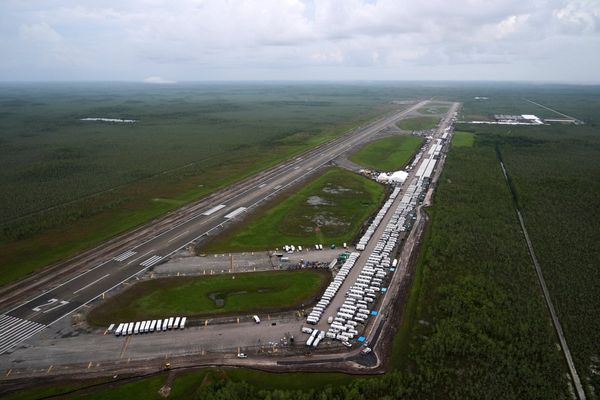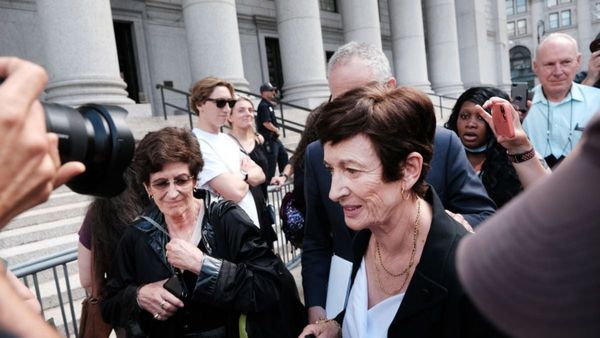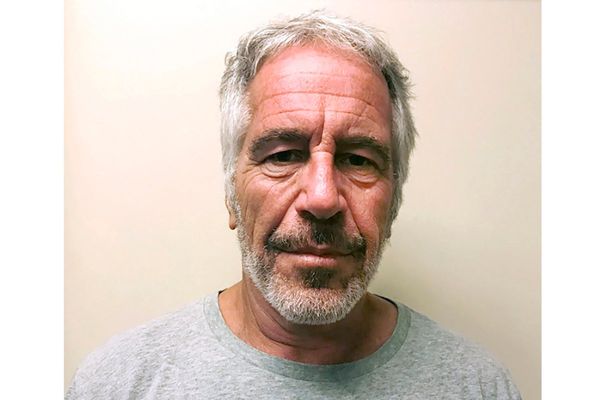PHILADELPHIA — Striking members of the first union in the storied history of the Philadelphia Museum of Art overwhelmingly approved their first contract Sunday evening and prepared to return to their jobs Monday morning, concluding a historic 19-day walkout.
"I love my job, and I'm really happy to go back to work," said Maia Wind, a graphics editor who has worked at the museum for 33 years and walked the picket lines for all 19 days since Sept. 26.
"We were able to hold out for the contract that we deserve," she said. "We actually deserve a lot more, but we won the strike. We definitely won the strike. So we're going to go back and we're going to be very strong."
The PMA Union, an affiliate of AFSCME DC47, had been negotiating a deal with museum management for two years. In the end, the museum agreed to virtually all that the union wanted, approving a 14% pay hike over three years (retroactive to July of this year), an increase in the minimum hourly wage from $15 to $16.75, "longevity" pay increases that would grant workers an additional $500 for every five years of employment, four weeks of paid parental leave, and help with the high cost of health insurance.
The contract had 99% approval with more than 120 members in attendance to vote.
Fed up with the slow pace of bargaining, leaders of the 180-member unit — here are roughly 350 staff members at the museum — had filed a grievance with the National Labor Relations Board in August and called a one-day "warning" strike Sept. 16.
William Petersen, museum chief operating officer, called the union action a disappointment and vowed that the museum would remain open, staffed by managers and nonunion personnel during any labor stoppage.
The union finally called a full-fledged strike Sept. 26.
It was not the first strike to affect the museum — there were walkouts by municipal workers in the 1980s and 1990s, when the city was facing its own fiscal problems — but this was the first institution-wide, museum-specific strike in the city's history.
Complicating matters was that upper echelons of the museum hierarchy, including chief executive and director Timothy Rub, had all retired by the beginning of this year. That left Petersen, a veteran of Verizon who had been hired to serve as museum lawyer, overseeing negotiations and daily museum operations.
The day of the walkout, Sasha Suda, former director of the National Gallery of Canada, a unionized organization, arrived to take over as director and CEO. The museum announced that she would not be involved in negotiations, mystifying observers.
Leslie Anne Miller, chair of the museum's board of trustees, said that the museum had hoped to have the contract resolved by the time of Suda's arrival.
"It didn't happen," Miller said. "Not to look back, but the reality is that we were two years into this, a complex negotiation. And we agreed that Sasha could best serve the museum by starting to get her internal bearings, and allowing us to finish up what we had started ... and although you might not have seen it, she was a very active, thoughtful and important member of this team and in a very short time."
Part of the reason for sluggish negotiations, said one source who was not authorized to comment on the negotiations and asked to not be identified, is that museum leadership "was under the impression that the employees would not strike and if they did, they couldn't 'hold the strike.'"
In other words, workers would drop out and cross the line.
Said the source: "They were sorely mistaken."
What ultimately made the difference, according to this source, was that city and state officials became involved.
"I think it was the intercession of local and state elected officials" that jump-started talks, said the source. "And people who knew key board leaders well urged them to resolve the issues and get back to business."
Several sources said Mayor Jim Kenney; Rich Lazer, deputy mayor for labor; and attorney general and gubernatorial candidate Josh Shapiro were among those who played a role in moving negotiations along.
Looming over all was the museum's impending blockbuster exhibition, Matisse in the 1930s, which opens to the public on Oct. 20. VIP and member previews were scheduled for this past weekend.
Museum officials did not relish the prospect of an international exhibit opening surrounded by picket lines as well-heeled museum-goers threaded their way past strikers.
Art handler Chris Havlish, a 17-year museum vet, said that the situation was "unfortunately becoming very bitter" as the strike dragged on — largely because there were persistent reports that the museum was bringing in nonunion workers to hang art for the Matisse exhibition.
Photographs of these Matisse installers spread across social media platforms.
"Oh, yeah, it feels very sweet to win," Havlish said. "I think a lot of reflection is happening. I'm reflecting a lot and trying to really keep a level head about it. But it does feel sweet."







